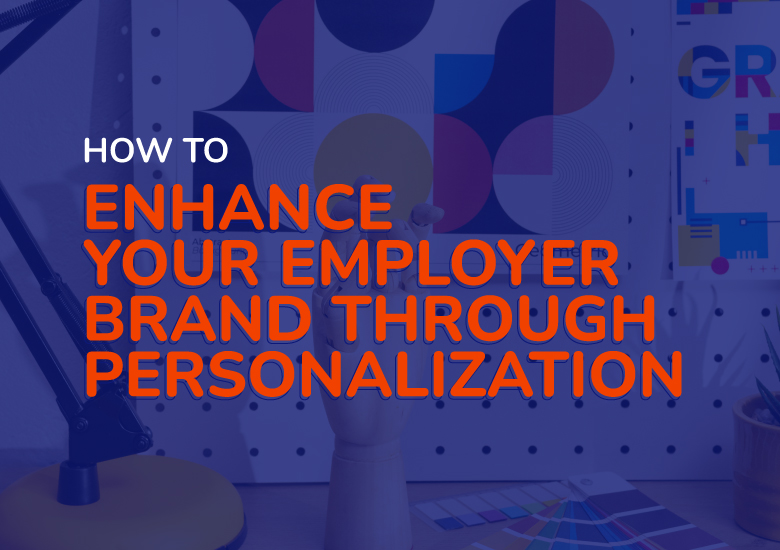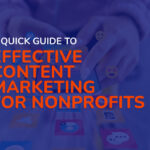How to Enhance Your Employer Brand Through Personalization

It’s no secret that the current job market presents challenges for both small business owners and job seekers. After all, the average job-seeker submits between 100 and 200 applications to land a job, and it’s easy for small businesses to be overshadowed by their corporate counterparts.
So, what does it take for small business recruiters to cut through the clutter and find the perfect applicant? It all starts with your employer brand. If candidates can easily tell what your business is about, they can see if—and how—they’d fit in, increasing their chances of applying. And if they decide the job isn’t for them, that’s one fewer resume review.
To that end, the key to strengthening your employer brand, building lasting relationships, and creating a positive candidate experience is personalization. It ensures that every interaction feels meaningful and tailored to each individual job seeker.
In this guide, we’ll review how to integrate personalization into the hiring process so you can improve your employer brand, build a better hiring toolkit, and even maintain positive relationships with your current employees.
Identifying and Leveraging Your Employer Brand’s Strengths
To personalize the candidate experience, you must first understand the integral aspects of your brand. That way, you can provide a genuine and personalized candidate experience, and candidates will understand how they could contribute to your brand. Once hired, candidates will know exactly what to expect from your work culture and seamlessly integrate into your team.
Before implementing any other talent acquisition strategies or rebranding efforts, get to the core of what really makes your brand shine by:
- Understanding your story. Analyze your evolution as a business to pinpoint what aspects have changed (or stayed the same) over time, and why.
- Identifying your business’s core values. For instance, your business might value innovation, perseverance, hard work, and community service.
- Gathering employee input. Collect your employees’ perspectives on why they enjoy working for you, as well as the unique aspects of your brand and work environment.
- Describing your company culture in a few words. Get insight into the employee experience by asking your staff for their thoughts to create a word tree visualization device.
Conduct this analysis thoroughly at the beginning of the hiring process. Then, continue to monitor our employer brand over time and identify relevant metrics to gauge your progress. That way, you can continually improve your understanding of your employer brand and update your marketing strategies accordingly.
Personalizing the Candidate Experience
Once you identify the strengths of your employer brand, incorporate them as you implement these best practices:
Create Customized Communication Campaigns
Imagine how cluttered your inbox would be if you had applied to between 100 and 200 jobs in the same cycle. It’s no wonder that generic recruitment marketing messages hardly ever catch the eyes of qualified candidates.
Make your messages stand out by personalizing them. You might do this by:
- Including personal details in each message, such as the candidate’s name, skills, experience level, and the position they’re applying for.
- Segmenting communications to ensure candidates with similar characteristics receive messages tailored to their specific needs.
- Sending personalized follow-up emails after each stage of the recruitment process, informing them of when they can expect to hear back and if any additional materials are required.
Personalizing all communications is time and resource-intensive. The only way to add all of these aspects to your recruitment process efficiently and effectively is by using purpose-built hiring software that stores data, automatically segments candidates, and even schedules messages to be sent. Even if you lack a large tech budget, don’t worry—JazzHR’s guide to hiring tech for small businesses lists many options for simpler recruiting needs.
Provide Personalized Support During Hiring
Regardless of how friendly, welcoming, or gracious your hiring team is, many applicants experience stress during the hiring process. Therefore, it’s important to check in with candidates whenever possible to provide them with personalized support. Plus, small businesses are generally well-positioned to offer this type of support because they tend to have more agile hiring structures.
The best way to support candidates is by providing them with a designated point of contact. This might be someone on the recruiting team or, if your candidate pool is large, another team member in a similar department. The liaison’s job is to be a friendly face and a resource throughout the hiring process, answering questions and providing advice for the candidate.
When selecting a liaison outside of your recruitment operation, ensure they’re a good match for the job’s responsibilities and the candidate’s needs. For instance, if you’re hiring a software engineer, a logical pick would be a software team member with experience and time in their schedule to help out.
Regardless of the liaison’s skills or background, ensure they understand the importance of transparency before matching them with a candidate. Anyone communicating with candidates should be open and honest about relevant aspects of the hiring process, such as when they can expect to hear back from you. Dishonesty could harm your relationship with candidates and, in turn, your employer brand.
Wrapping Up
Now that you know more about personalization in the hiring process, you might be eager to get started! Before you do, meet with your team to review the best ways to effectively market your hiring efforts. Ensure the marketing channels you decide to use have ample personalization resources to help catch candidates’ attention immediately.
About the Author
Jennifer Purcell is a marketing executive with deep experience building brand, communications, and content strategies for SaaS technology companies. At Employ, she leads content and social media, helping TA and HR pros stay ahead of the latest market trends and discover the unmatched value of tailored ATS solutions. Jennifer previously led brand, content, and social media for a social good tech company and spent plenty of time both in-house and agency side working with customers to build marketing programs that drive action.



